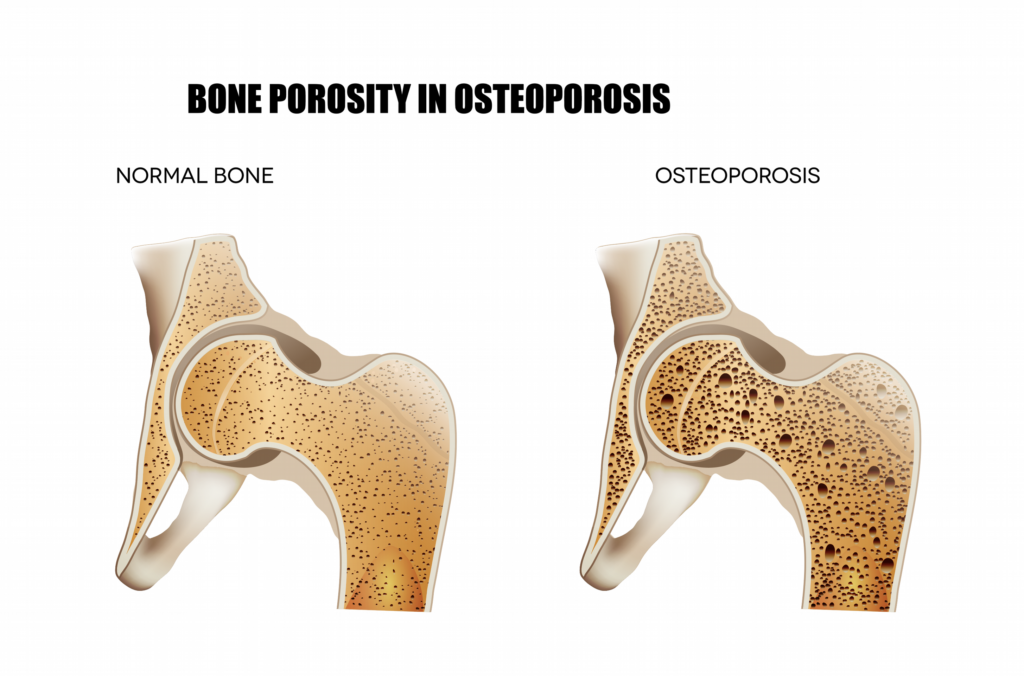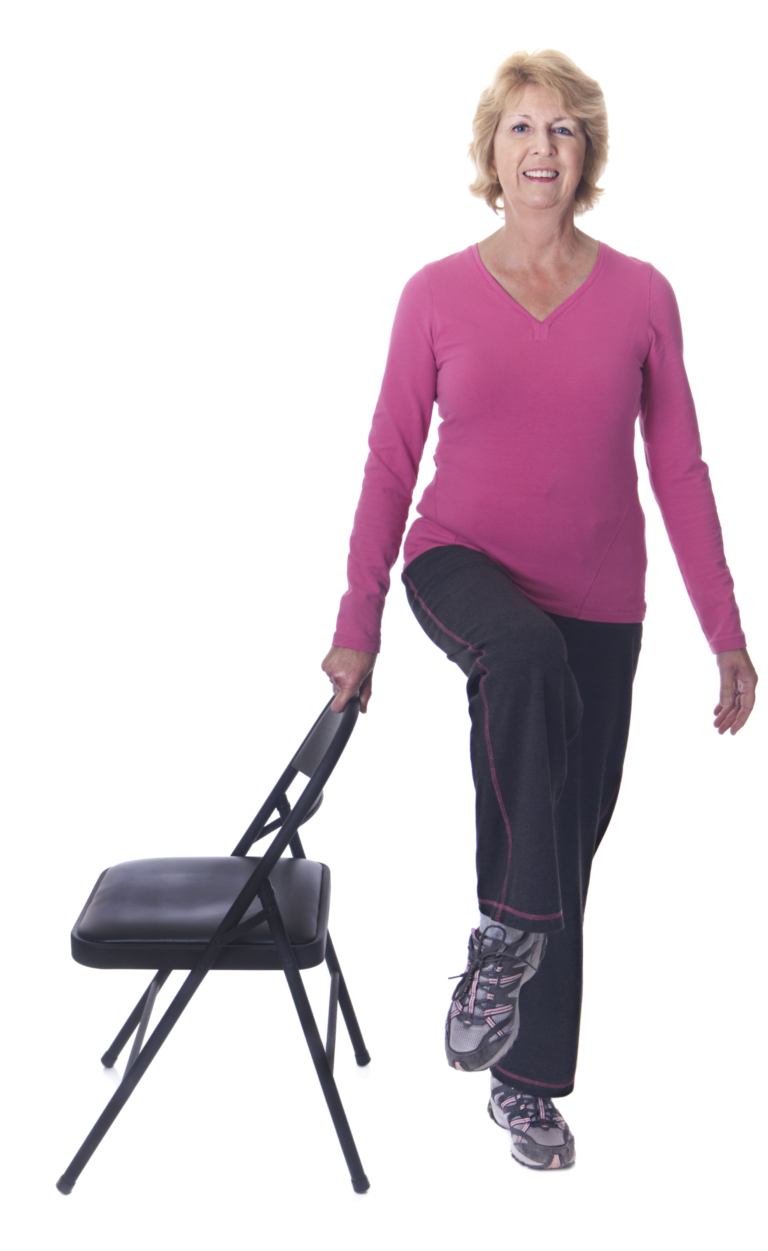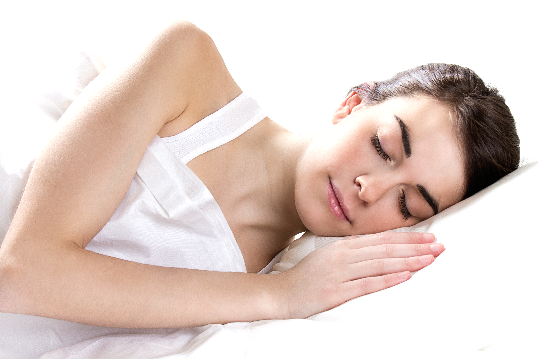
Hip and spinal fractures cause by osteoporosis are becoming more common in the aging populations around the world and especially in Western societies.
Osteoporosis is a quantitative reduction in bone mass due to an imbalance between bone formation (osteoblasts form bone at cellular level) and bone resorption (osteoclasts). These two processes are normally in balance and our skeleton (which stores 99% of calcium in our bodies) is replaced every 10 years. Our bone stock is maximal at age 30-35 years, after which we steadily lose bone mass and strength with maximal loss of 3-4 % occurring in the one year around the age of menopause in women due to the loss of the bone protective effect of oestrogen.



What about genetic factors?
The fear factor
Osteoporosis is not a painful condition unless one sustains a fracture and even these may not be painful in the spine in 60% of patients. There was a campaign to cause fear in older people, around the time new drugs came onto the market. However, there is a real concern that osteoporosis can result in a hip fracture, which is often associated with a very high mortality (one in 5 die within 6 months and one in 4 within a year of a hip fracture).
Lifestyle factors
These are best discussed under the 6 pillars of lifestyle medicine starting with the most important
- Nutrition– A diet rich in whole plant foods, whilst minimising refined and processed foods works to create an ideal milieu for bone formation.



- Protein– Plant sources of proteins, including vegetables and legumes, seeds and whole grains are all good in terms of the balance of amino acids, with soya and quinoa being particularly good sources of essential amino acids. Furthermore, plant sources have a lower potential renal acid load (PRAL) as they have a lower content of sulphur containing amino acids compare to animal sources of protein. These amino acids (methionine and cysteine) produce sulphuric acid and result in loss of calcium from the body into the urine. This is one of the reasons why the recommended daily allowance (RDA) is higher in countries that consume the most meat and dairy consumption. Older adults may need higher intakes of protein and this is usually recommended at 1.2 grams/kg per day. Soya products such as tempeh or calcium-set tofu are excellent for bone strength by having a full complement of amino acids as well as phytoestrogens that promote bone health. Aim for two portions of minimally processed soya per day.
- Fat-Polyunsaturated fats, including omega 3 fatty acids, are essential for bone formation and a source such as milled flax or chia seeds should be part of the diet.
- Carbohydrates– Fruit and vegetable consumption has been shown to be beneficial for bone health with prunes especially helpful for improving bone strength.
- Important micronutrients
- Vitamins-Vitamin D helps our bodies absorb calcium and most of our Vit D is made from the action of sunlight on our bodies. As the UVB rays are not strong enough to enable this between the months of October-March, a daily 10mcg supplement is required for the general population during the winter, although some groups are advised to take all year round. These include pregnant and breast feeding women, those over 65 years of age, babies and young children, those with darker skin and those who spend a lot of their time indoors. Mushrooms exposed to UVB rays are a source of vitamin D.
- Vitamin C- an adequate amount per day is present in a single orange. All citrus fruit and green leafy vegetables are good sources of vitamin C Vitamin K: our bodies need this in order to make the proteins involved in forming and strengthening bone. Adult requirements are 1mcg/kg/body weight per day. Sources include dark green leafy veg like spinach, kale and brussel sprouts; broccoli, cauliflower, blueberries.
- Vitamin K2 – produced in the gut by the bacteria from fibre contained in green leafy vegetables. Vitamin K2 seems to have a role in calcification of bone matrix and regulates calcium metabolism by preventing calcification of blood vessels especially when in excess as supplements. It also seems to increase bone strength without increasing bone density.
- Phosphorous: this mineral works with calcium to build and maintain bones and, along with Vitamin K, it is regulated in part by Vitamin D. Adult requirements are 550mg/day and source include beans, chickpeas, lentils, soy, nuts, pumpkin seeds.
- Vitamin B12 – needs to be supplemented in all vegans and all people above the age of 50. It has a role in preserving bone density by its action in homocysteine metabolism. Its main role is of course in preventing neurological damage and therefore falls and fractures as a result.
- Minerals- Calcium- Because bone and teeth are the main storehouses of calcium, it is intuitive to think of calcium as being the ‘vital mineral’. Blood calcium levels are kept within a very narrow range with many hormones and vitamin D, working in harmony to fine tune this. In fact, calcium has a vital role in muscle and nerve function besides being of structural importance in bone. Despite the dairy industry overemphasising the importance of milk an essential source of calcium, there are plenty of plant sources of calcium, which are devoid of the negative impacts of dairy consumption. The consumption of cow’s milk and dairy does not correlate with bone health, and in fact countries that consume the most dairy, such as Sweden, have some of the highest rates of hip fracture. The possible mechanism for this may be the oxidative stress caused by galactose, formed from the breakdown of lactose in dairy. Dairy has a higher proportion of methionine and cysteine (sulphur containing amino acids), which is ultimately metabolised to sulphuric acid. This acidity is not good for bone formation. Calcium in best obtained from the diet rather than supplementation in tablet form as this result in high levels of elemental blood calcium. Calcium supplementation has been shown to predispose to renal stones and coronary heart disease due to deposition in atherosclerotic plaques. See below for more information on calcium in a plant-based diet.
- Magnesium– 250 mg per day is optimum for bone health and is found in adequate amounts in nuts and seeds.
- Silicon– is important for bone formation and recommended at 40mg/day. It is found in green beans, carrots, nuts and seeds, whole grains, and cereals. It is also found in beer probably in the processing of hops and barley and men seem to find it easier to reach the RDA than women (not a recommended source of silicon!).
- Inositol– this is a carbohydrate found in fruit such as cantaloupe and prunes and is essential in bone formation. Prunes are also rich in phenolics and vitamin K.
- Zinc, Copper, and manganese are also required in small amounts and are usually required in small amounts and are easily obtained in most balanced diets.
- ‘Calcium thieves’- Certain dietary and lifestyle factors result in calcium loss and are referred to as calcium thieves. These factors are more prevalent in Western societies, contributing to the higher RDA of calcium. Smoking, alcohol consumption, coffee more than 3-4 cups a day, sugar sweetened beverages and fizzy drinks, especially cola drinks that have caffeine as well as phosphoric acid, result in calcium loss. Excess salt in food has a similar effect.
- Exercise– the focus on calcium consumption has taken away the importance of regular, daily exercise and activity, which is vital for bone health. Osteoporosis is a disease of our sedentary modern-day lifestyle. It was virtually unknown a few centuries ago. Even very active people tend to focus on one form of exercise rather than doing a variety of. It is recommended that all adults undertake at least 150 minutes per week of moderately vigorous physical activity. Walking maintains bone density but does not help to increase it unless one wears weighted jackets and wrist and ankle weighted bands to increase the joint reaction force. Multicomponent exercises, especially including some form of resistance training, at least three times a week are recommended. Impact exercises such as jogging, skipping, star jumps, and stair climbing are all helpful. Whole body vibration plates are also helpful in increasing bone strength and density as well as reduce falls risk by muscle strengthening and improvement of balance. Even in post-menopausal women there is some evidence of improvement in bone density.



-
- Restorative sleep- We sleep to survive. Good quality sleep is essential for bone formation through regulation of circadian ‘clock genes. Lack of restorative sleep makes us poorly motivated to exercise. It’s important is often underestimated, especially by men!



-
- Stress management- While bone responds positively to mechanical stresses, it is also negatively affected by stressful situations causing the release of cortisol which is known to breakdown bone. Managing this kind of stress is essential to even bone health.



- Avoidance of risky substances– Alcohol and smoking both have negative effects on bone formation.
-
- Forming and maintaining healthy relationships- According to Dan Buetner, author of the Blue Zones, it is more difficult to change habits and easier to change one’s environment. Making friends with people who like exercise or outdoor activity is a healthful way of getting the benefits of this.



Key take home messages
- Consider a predominantly whole food plant-based diet rich in fruit, vegetables, whole grains, legumes. Consume two portions of minimally processed soya every day.
- Supplement vitamin D especially in the winter and autumn months.
- Ensure an adequate intake of calcium.
- Combination of exercises are good for bone strength, especially weight bearing exercises and strength training and resistance exercises.
- Avoid substances that increase calcium loss such as smoking, coffee in excess, sugar sweetened beverages especially cola drinks, alcohol, and excess salt.
